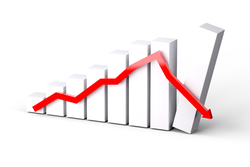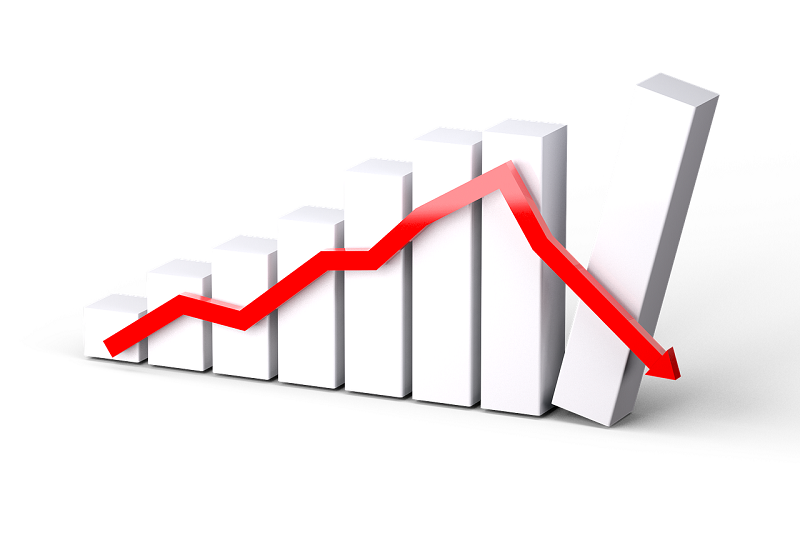
Feb. 16, 2018
By: Michael Feldman
Closing the books on 2017, Cray announced one of the worst financial reports in recent memory, reporting a net loss of $133.8 million. It marks the first time since 2009 that the company went into the red and represents the second worst net loss in its history.
 Revenue took a beating, as well. For 2017, the company took in just $392.5 million– down from $628.6 million it collected in 2016. The last time Cray’s was in this sort of revenue territory was 2012, when it brought in $421.1 million.
Revenue took a beating, as well. For 2017, the company took in just $392.5 million– down from $628.6 million it collected in 2016. The last time Cray’s was in this sort of revenue territory was 2012, when it brought in $421.1 million.
Some of the poor results can be attributed to a valuation allowance the company decided to apply against all its US deferred tax assets. A new US tax law, known as Tax Cuts and Jobs Act of 2017, has enabled companies to repatriate foreign profits at a low one-time-only corporate tax rate. Cray, as well as other companies, are taking advantage of this provision for their 2017 finances. In Cray’s case, the impact was a charge of $108 million.
But that only explains the depth of the losses. The big problem for Cray in 2017 was a sluggish supercomputer market. On the investor call reporting the 2017 financial results, Cray CEO Peter Ungaro characterized what has been going on as a “significant downturn” in the high performance computing space. The downturn, he said, applied across all its market segments and geographies.
He attributed the slump to a combination of five factors: a challenging government funding environment worldwide, a slowdown in the pace of technology improvement in processors, an increase in memory costs, a retrenchment in the energy market, and a significant number of large customers that delayed replacing older systems. Regarding the latter, Ungaro noted that many supercomputers in the field are now operating well beyond their typical four-year lifespan.
“All told, we believe our target market was down by 60 percent in 2017, when compared to our peak in 2015,” said Ungaro. That was the year the company brought in $724.7 million of revenue.
One bright spot for Cray is their growing footprint in the commercial HPC space, which increased on both a dollar basis and as a percentage of revenue. Ungaro noted that Cray finished 2017 with more than 12 percent of its revenue coming from commercial customers – up from single digits in 2016.
Another area for optimism is Cray’s continuing dominance of the weather/climate modeling space. Its latest successes in this area are the two multi-petaflop XC40 supercomputers installed in India – one at the Indian Institute of Tropical Meteorology (IITM), in Pune, and the other at the National Centre for Medium Range Weather Forecast (NCMRWF), in Noida. The one in Pune, named Pratyush, is a four-petaflop supercomputer and is now the most powerful system in that country.
Another hopeful area is the AI market. Cray’s first big win here was last November, when they announced Samsung had bought a CS-Storm GPU-accelerated cluster to be used for AI and deep learning research workloads, including for systems related to autonomous cars. An unnamed financial service firm also chose a GPU-accelerated CS-Storm for deep learning, which will be used to add more smarts to the company’s casualty and property insurance claims.
The data analytics space is another area where Cray is trying to expand its presence, primarily with its Urika-GX system. In 2017, it sold a pair of these to a government agency who apparently needed such platform for its analytics needs.
When it comes to future growth, both AI and analytics are recurring themes for Cray, which sees those applications as a way to latch onto markets that are growing a good deal faster than traditional HPC. The same goes for the supercomputer-maker’s expansion into high-performance storage (thanks mainly to the ClusterStor acquisition), the third leg of Cray’s big data strategy.
For this year, things are looking up. The company is seeing early signs of a rebound on big systems procurements. Some of that Ungaro attributed to the perception that government budgets in the US and elsewhere appear to be firming up. Overall, they expect to bid on three times as much business this year as they did in 2017. And since Cray’s win rates have historically been quite good, that suggests a lot more revenue would start to enter the pipeline this year. Of course, only a portion of that will be booked for the current year; most of it will be realized in 2019 and beyond.
For 2018, the company is projecting it will grow revenue by 10 to 15 percent compared to 2017. Note that that won’t get them back to their 2016 revenue levels and certainly not to their record year of 2015. Nevertheless, it could return Cray to the kind of growth trajectory it enjoyed in the first half of the decade.
“We’ll continue to expand on our value proposition as we’ll be refreshing our entire product line in 2018,” said Ungaro. “Stay tuned for more on that in the coming quarters.”
Looking further into the future, Cray expects the global push to exascale to help accelerate its momentum into the next decade. Being the only supercomputer specialist left standing, Cray is positioned quite well for the gold rush to exascale. Over the first half of the next decade, we should see multiple machines deployed by all the major powers. And since each of these systems will be worth hundreds of millions of dollars, even a relatively small number of wins would make a big difference to Cray’s bottom line.
“It is looking like the supercomputing market is shaping up to be strong over the next several years,” concluded Ungaro. “And with this unique exascale opportunity on top of that, the period from the early 2020s through the mid-2020s may shape up as one of the best high-end supercomputing markets in history.”
